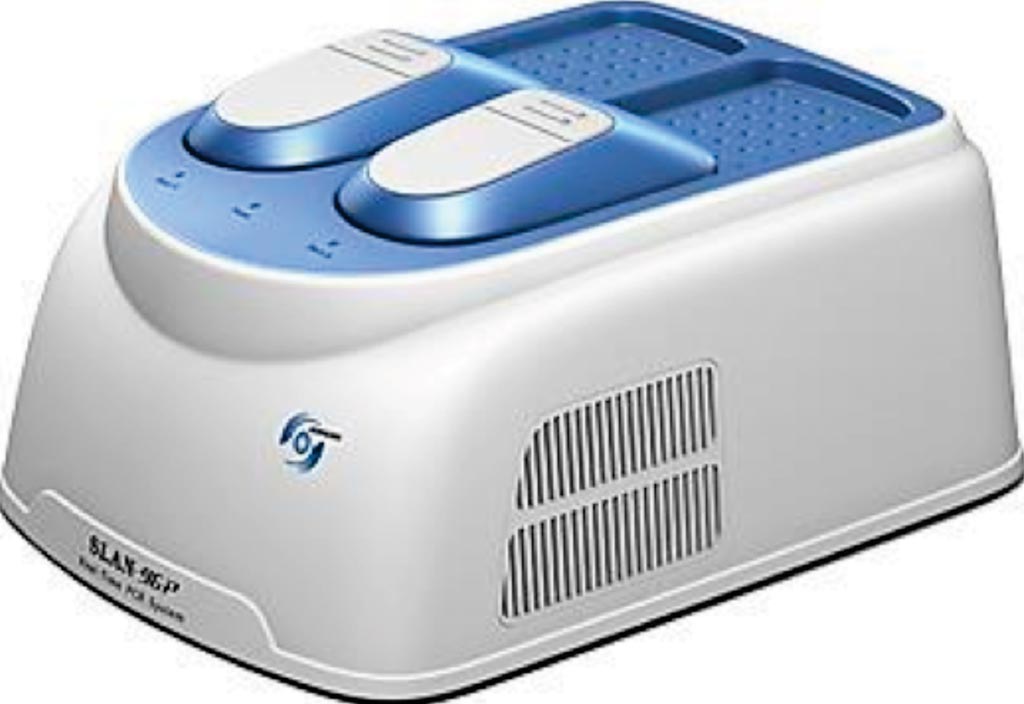Multiplex Molecular Assays for Respiratory Viruses Evaluated
By LabMedica International staff writers
Posted on 02 May 2017
Acute respiratory infections (ARI) are one of the major causes of mortality worldwide, and approximately half are caused by respiratory viruses (RV). There are several types of tests for detection of these viruses.Posted on 02 May 2017
The nucleic acid amplification test (NAAT) has widely been accepted in recent years and has advantages in comparison to the classical methods of viral culture and direct fluorescent antibody tests. NAAT has superior sensitivity identifying RV cases not detected by classical methods and RV testing results are available faster than those of viral cultures.

Image: The SLAN Real-time polymerase chain reaction (PCR) detection system (Photo courtesy of Shanghai Hongshi Medical Technology).
Laboratory scientists at Kangwon National University School of Medicine collected between December 2015 and March 2016, 201 respiratory samples (161 nasopharyngeal swab samples and 40 sputum samples) from young male soldiers (age range 18-27 years, median 21 years) with acute respiratory illness. Nasopharyngeal swab samples were obtained using flocked swabs and sputum samples were received in sterile plastic containers.
A nucleic acid extraction system was used for each RV assay. The team tested the samples with three commercial RV assays: Seegene Anyplex II RV16, LG AdvanSure RV, and Biosewoom Real-Q RV. The additional tests for the discrepant results were conducted by repeat RV assay or monoplex PCR coupled direct sequencing. The AD assay performs both reverse-transcription (RT) reaction with the extracted RNA from specimen and multiplex PCR reaction simultaneously and conducted in a SLAN Real-time PCR detection system.
The scientists found that of the 201 samples, AP, AD, and RQ detected 105 (52.2%), 99 (49.3%), and 95 (47.3%) positive cases respectively. Viral co-infection samples were identified in AP assay for 24 (11.9%) patients, in AD assay for 17 (8.5%) patients, and in RQ assay for 11 (5.5%) patients. The performance of the three assays was very similar, with 94%-100% agreement for all comparisons of each virus types. The additional testing of samples showed discrepant results demonstrating that AD assay had the highest rate of concordance with original results.
The authors concluded that the agreement of the three assays were very good, with 94%-100% agreement for all comparisons. They suggest that all multiplex assay would be suitable for the detection of for respiratory viruses in clinical setting. The study was published on April 11, 2017, in the Journal of Clinical Laboratory Analysis.














